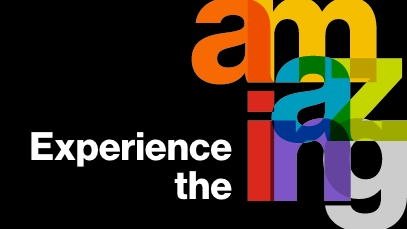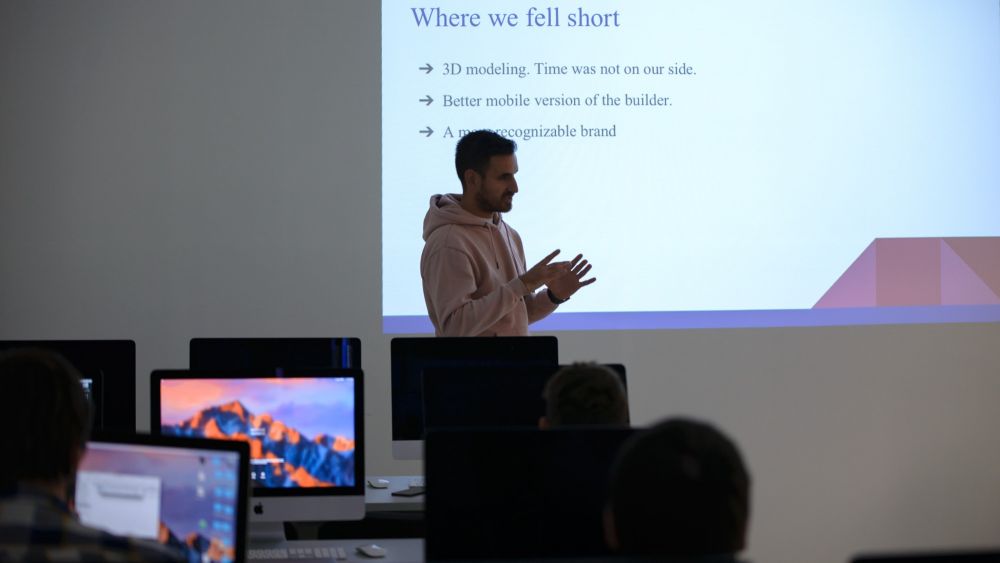Creativity and Innovation at RIT Croatia
It is not wonder that creativity skills have become one of the most sought after skills in today's globalized world of the 4th technological revolution. And yes, you will find many reports, articles and research confirming the importance of creativity for business prosperity, but its relevance surpasses the business arena. As Dr. Jakob Patekar, General Education Chair at RIT Croatia put it - creativity skills and thinking is important for us as individuals and societies as a whole (think of all inventions throughout the history!); however creativity does not have to be grand to make the impact. "Creativity doesn't necessarily mean starting a revolutionary company - it can be as simple as growing your own vegetables. Innovation doesn't necessarily mean finding a cure for cancer - it can be as simple as helping a friend find a way out of a dire situation."
Because of the importance of creativity and innovation for humankind, the United Nations designated April 21 as World Creativity and Innovation Day. We used this occasion to talk to our faculty to learn how is creativity celebrated and nurtured on our campuses.
Light the Fire, Inspire Students to Discover and Develop Their Passions and Sources Of Creativity!
"RIT Croatia has traditionally been oriented towards creativity and innovation", says faculty member Domagoj Nikolić, who teaches in Hospitality and Tourism Management program. "This is something that we nurture from Day 1. Creativity is embedded in our teaching approach, culture, relationships and, ultimately, course contents and materials. Our approach is very much oriented to relevance. In other words, if it is not relevant or does not create practical value, it is not going to be considered, let alone included in our core courses." Domagoj Nikolić uses flipped classroom model and views himself as a team-member, rather than distant professor. His aim is to help and support students in their discoveries through "applied projects, simulations, experiential learning, design, field visits, guest speakers, etc. The point is", as he says "to light the fire, inspire students to discover and develop their passions and sources of creativity." He becomes a collaborator in their development, personal and professional, and the two-way exchange of ideas benefits both sides. "I believe that only by serving students' ideas and aspirations, education can foster adaptability and creativity, and ultimately stay relevant."
It Takes an Open-Minded Professor to Nurture Creative Young People
Dr. Nina Antičić and Dr. Maja Vidović are both big advocates of creativity, and teach in RIT's Business Administration: International Business program.
"RIT Croatia places a high value on creativity which is why it has hand-picked faculty members that are creative themselves, and get hugely excited when students respond well to prompts, and showcase their own creativity," says Dr. Vidović. "In my course Organizational Behavior, at the end of the semester, after we covered all the important topics, I give students the opportunity to focus more deeply on a particular small topic that tickled them the most. I hated calling it Final Paper, so instead, the name of the assignment is My 2 Cents. It immediately gives the entire task a different flavor. Students already recognize this as a prompt to think outside of the box. I help them narrow down their focus, and as a result, we have a series of short TED-talk-like presentations, covering topics such as: "The Dark Sides of Emotional Intelligence", "Can fame and popularity change your personality?", "How Did Steve Jobs' Death Affect Apple's Organizational Culture", "Nasty women - why are females in the workplace vilified for just doing their jobs?", "Working in a cubicle", "Hierarchy and motivation in a soccer team", "Why should meeting tables be oval-shaped", and similar."
Dr. Antičić agrees: "Creativity is embedded in every session because students are active participants in the lecture. They are stirred toward discovering things themselves, rather than being presented with things and lectured. In Professional Selling Course, which I teach, students learn to sell and negotiate. The class activities are split between lectures, discussion, and playing roles, but role-playing prevails. The professor develops the role-playing scenarios which can be for example B2B selling situations, negotiating one element of the contract, etc. All students receive some general information, but specific information is given to each party separately. The first party does not receive the same information that the second party received and vice-versa. Plus, the parties in the role-play have conflicting objectives. That gives a sense of competition. That's how tension is created and how emotional arousal is achieved. An assignment is to reach an agreement. So, there is no expected result/outcome. An outcome is what students make of it. The better they master selling or negotiation theory and prepare for negotiation, the higher the chance that they will win in negotiation. Students learn through professors' comments and recommendations given during the course of role-play (in this situation, we do this or that). Finally, students recap by addressing what could have gone better and what better outcomes could have thy achieved had they prepared differently."
Engineering and Innovation Drive the World and Shape New Paradigms
Dr. Martin Žagar is a big aficionado of creativity and innovation which is reflected in many of his research projects. At RIT Croatia, he teaches in the Web and Mobile Computing program and emphasizes the key role of creativity is in STEM education. "WMC students need to define and design real-problem solutions in cooperation with industry partners in their Senior Development Project Courses. The whole course is focused on providing support to students' needs in choosing the right technologies, frameworks, and shaping the features. Creativity is really important when students need to shape their own cool projects and solutions in critical domains like AI, Blockchain for business applications or telehealth, and gamification of learning. For those, they need to think about the upcoming problems, shape the requirements (which are reshaped and approved by the instructor) and design the solution. To sum up, creativity and innovation is the most important step in achieving the learning outcomes."
General Education on its own is already a step out of the box
Studying at RIT, an American university, means that the students will not only gain knowledge and skills related to core program courses. General education is really important, and contributes to the development of their creativity thinking. "General Education on its own is already a step out of the box," says Dr. Patekar. "When students of, for example, business, take classes in philosophy, psychology, writing, literature, etc., their horizons undoubtedly expand. In this way, RIT Croatia does not produce an army of narrowly specialized soldiers of the economy, but instead provides education that helps students develop into wholesome individuals who are able to view the world around them from different perspectives; in turn, this helps students understand the world better, which is a great starting point for creativity and innovation."











